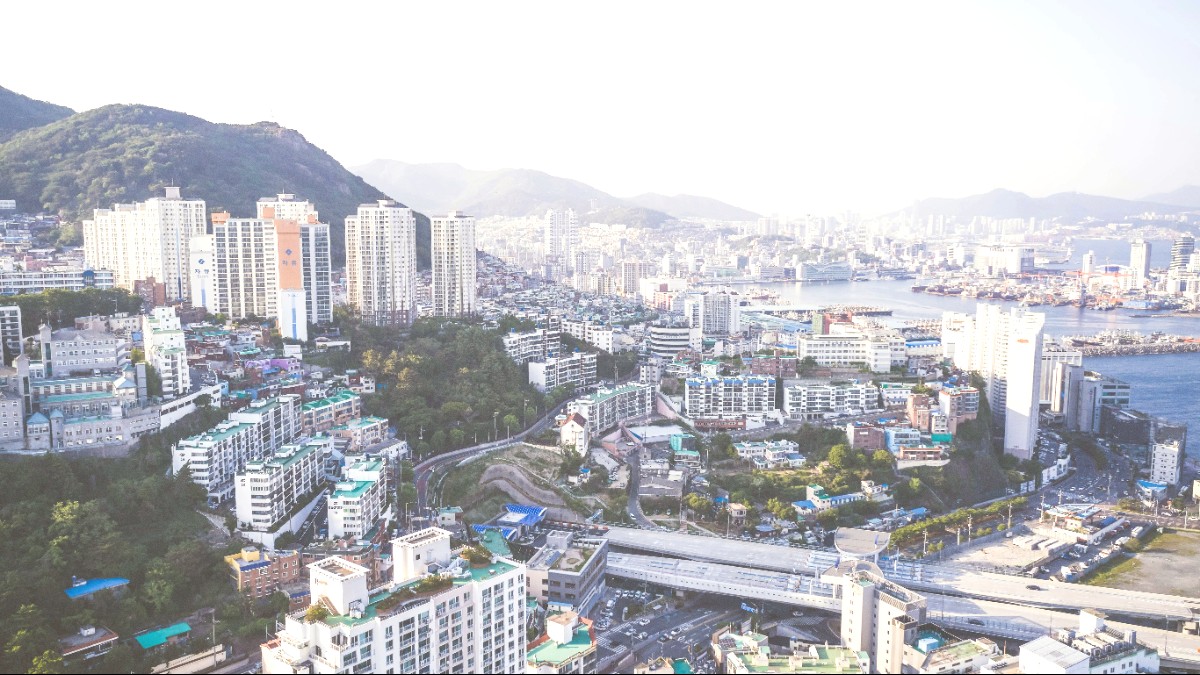
Gyeongsangnam Do, South Korea
Busan experiences four distinct seasons, each with its own temperature, precipitation, and humidity levels.
This period often sees clear skies, making it popular for outdoor activities. The monsoon season, known as Jangma, typically occurs from late June to late July, bringing heavy rainfall.
Busan's popularity changes with the year. High season (April-May, July-August, October) offers ideal weather for specific events like cherry blossoms or autumn foliage.
Shoulder season (March, June, September, November) often brings pleasant weather with fewer crowds. Low season (December-February) provides fewer tourists and lower prices, though with colder weather.
Late June to late July
Heavy rainfall, potential for localized flooding.
Pack waterproof gear if visiting during this period.
Late summer to early autumn
Strong winds and heavy rain possible.
Monitor local weather forecasts, stay indoors.
Mainly in spring
Air quality issues from mainland China.
Consider a KF94 mask for sensitivities.
April to May and September to October offer agreeable temperatures and clear skies. These periods are excellent for exploring mountains, coastal paths, and city attractions.
Many major festivals, like the Busan Sea Festival and Busan International Film Festival, happen in summer and autumn. Check specific event calendars for dates.
Late March to mid-April marks the peak.
Late October to mid-November for colors.
Summer months draw visitors to Haeundae and Gwangalli.
Fewer tourists, quieter experience.
Autumn typically offers the most clear days.
Review these guidelines well before your departure.
Many nationalities enjoy visa-free entry for short-term tourism (30 to 90 days). The K-ETA is mandatory for most visa-free travelers.
Citizens of countries not eligible for visa-free entry or K-ETA must obtain a visa in advance.
This section details budgeting for your Busan adventure.
The official currency of South Korea is the South Korean Won (KRW, ₩).
Major credit cards (Visa, Mastercard, American Express) are widely accepted in hotels, larger restaurants, and department stores. Smaller local shops or street food vendors may prefer cash.
For travelers seeking maximum value.
Daily Estimate: ₩50,000-₩110,000 (~$35-80)
Accommodation: ₩25,000-₩50,000 (hostel)
A balance of comfort and value.
Daily Estimate: ₩140,000-₩290,000 (~$100-210)
Accommodation: ₩70,000-₩150,000 (hotel)
Top-tier comfort and experiences.
Daily Estimate: ₩370,000+ (~$270+)
Accommodation: ₩200,000+ (5-star hotel)
| Category | Type | Price Range (KRW) |
|---|---|---|
| Accommodation | Hostel Dorm Bed | ₩20,000-₩40,000 |
| Meals | Street Food/Convenience Store | ₩5,000-₩10,000 |
| Transportation | Metro/Bus (single fare) | ₩1,300-₩1,550 |
This section outlines considerations and practical advice for a safe trip.
Ensure MMR, DTP, Varicella, Polio are up-to-date.
Recommended for most travelers, especially for street food.
Check daily forecasts. KF94 masks are available.
South Korea boasts a high-quality, modern healthcare system.
Hospitals and clinics are readily available. Major hospitals often have international clinics or English-speaking staff.
Pharmacies are easily found for over-the-counter medications. Tap water is generally safe to drink.
Food hygiene standards are stringent.
Responsive and efficient services.
For all police emergencies.
Assistance in multiple languages for travel questions and support.
Busan is a very safe city with low crime rates. It consistently ranks among the safest major cities globally.
Travel insurance is highly recommended for any international trip. A comprehensive policy covers unforeseen circumstances.
Korean healthcare is high quality, but costs may be substantial without insurance.
Covers non-refundable expenses if your trip is cut short or canceled.
Coverage for lost or delayed luggage and medical evacuation.